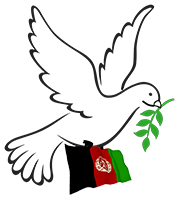The volume of trade between Afghanistan and Iran reaches three billion dollars annually.
Officials from the Islamic Emirate have stated that the ongoing conflict between Iran and Israel will negatively affect trade and economic relations between Kabul and Tehran.
The Deputy Minister of Economy told TOLOnews that these clashes could lead to price hikes in several commodities, particularly fuel, and that the Islamic Emirate is working to find alternative routes and strategies.
Abdul Latif Nazari, deputy minister of economy, said: “Any conflict and continued hostility between the Islamic Republic of Iran and Israel can negatively impact our economic and trade exchanges, especially by raising prices in the fuel sector. The Islamic Emirate is actively working on identifying alternative approaches to minimize negative effects on the country’s economic conditions.”
Meanwhile, the Chamber of Commerce and Investment also considers Iran a major economic partner of Afghanistan and warned that military conflict between Iran and Israel will have adverse economic consequences for Afghanistan as well.
Khan Jan Alokozai, a member of the leadership of the Chamber of Commerce and Investment, said: “These tensions and the problems arising from Israel’s missile attacks on Iran, which have led to the start of war, are also worrying for us. It has caused concern and will directly impact our economy.”
Mir Shakir Yaqubi, an economic analyst, said: “It is clear that a conflict between Iran and Israel will raise global oil prices, and for Afghanistan, which heavily relies on imported energy, this will naturally lead to increased transportation costs and prices for imported raw materials. Additionally, transit routes such as Chabahar and Islam Qala may be disrupted.”
The volume of trade between Afghanistan and Iran reaches three billion dollars annually. After Iraq, Afghanistan is considered Iran’s second-largest economic partner.
The Islam Qala crossing in Herat, Milak in Nimroz, and Mahirood in Farah are recognized as official border crossings between Afghanistan and Iran, used for imports, exports, transit, and passenger movement between the two countries.
 Afghanistan Peace Campaign
Afghanistan Peace Campaign


